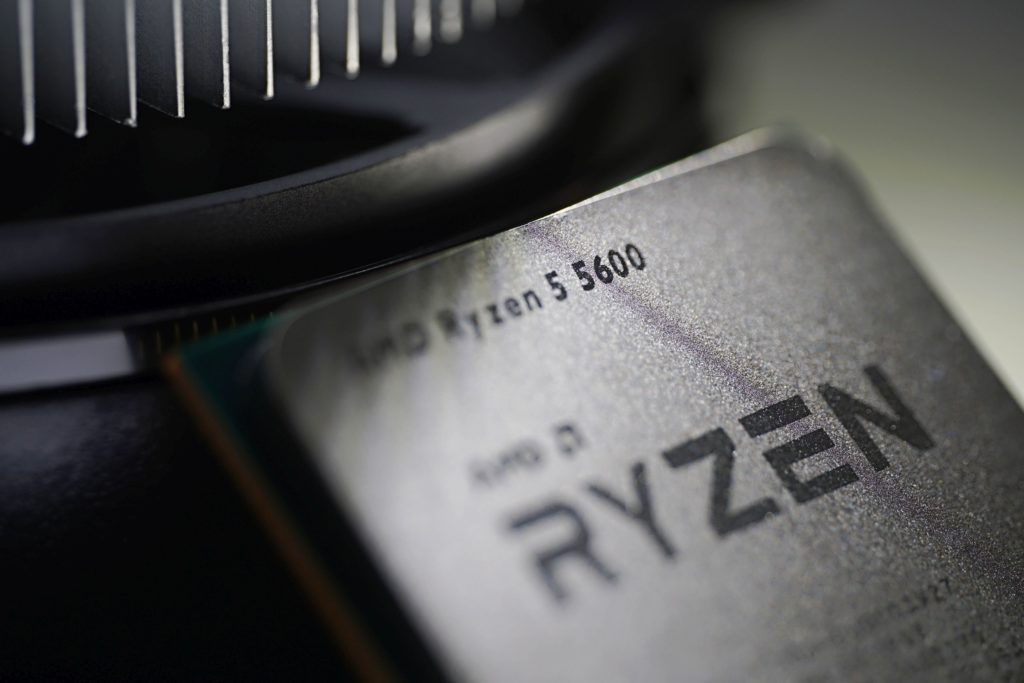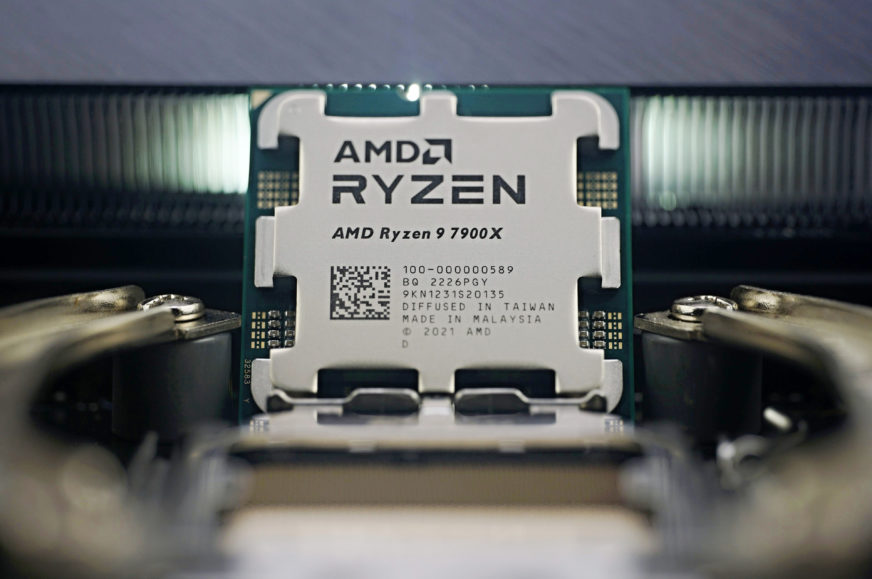Desktop Phoenix for AM5 socket, refreshed Cezanne models for AM4?
It looks like AMD could launch quite a few new desktop processors after the turn of the year. Last week, alleged specifications of Ryzen 8000Gs were leaked, which will be a desktop version of the 4nm Phoenix SoC with Zen 4 architecture. At the same time, reports appeared telling of new upcoming releases for the old AM4 platform, which is supposedly getting new models again, perhaps also some APUs with integrated graphics.
This leak comes from a not particularly well-known and verified source, as it was published by the Iranian website Sakhtafzarmag (not going to lie, this is the first I’ve heard of it). We already know from previous reports that AMD is preparing the desktop version Phoenix APU, the 4nm chips with Zen 4 architecture and RDNA 3 generation integrated graphics, with cheaper models expected to use the smaller Phoenix 2 chip (in which some of the cores have Zen 4c architecture). The Iranian website directly lists the parameters and clock speed of the coming SKUs. It is probably not guaranteed that they are completely accurate, but the information is certainly interesting. By January it should be clear whether this was legitimate data.
The most powerful Phoenix APU model for the desktop socket is said to be the Ryzen 7 8700G with eight Zen 4 cores and 16 threads. According to the Iranians, this processor will have a base clock speed of 4.2 GHz and a maximum boost of 5.1 GHz. So the maximum clock speed is about 200 MHz lower than what you get with the Ryzen 7 7700, which is based on the 5nm Raphael chiplet design. This clock speed deficit entailed in APU products was also present in previous generations, so it is not surprising. But it does mean that it will probably be a worse choice for gaming (by which we mean in PCs using discrete graphics, while the integrated GPU will obviously be much more powerful than the basic iGPU the X and X3D Ryzens have), contributed to by the smaller, just 16MB L3 cache.
The TDP of these Ryzen 8000G APUs, according to the same source, is 65 W with the possibility of lowering it to 45 W. This would therefore be unchanged from previous generations on the AM4 platform. The iGPU parameters are not listed, but this model should have a fully active configuration with 768 shaders of RDNA 3 architecture.
Lower models will continue with the Ryzen 5 8600G processor with six Zen 4 cores / 12 threads and a clock speed of 4.35 GHz in the base and 5.0 GHz in boost (for comparison – the Ryzen 5 7600 model has a boost of 5.1 GHz). The cheaper Ryzen 5 8500G will also be a hexa-core, but it already has only two Zen 4 cores, the other four will be Zen 4c, apparently with lower maximum clock speeds. This too may degrade gaming performance – we’ll are actually quite curious to see what the reviews reveal about this hybrid setup. The clock speeds are listed as 3.55 GHz / 5.0 GHz (so this SKU even has the same boost as the Ryzen 5 7500F).
The cheapest model (at least for now) is supposed to be the quad-core Ryzen 3 8300G with eight threads. Presumably it will consist of one big Zen 4 core and three Zen 4c cores. Its clock speeds are supposed to be 3.45 GHz in base and 4.9 GHz in boost. The low base clock speeds of these last two models could be due to the presence of Zen 4c cores, which have maximum clock speeds significantly lower than Zen 4.
| Model | Cores / Threads | Base clock speed | Turbo | TDP |
| Ryzen 7 8700G | 8+0/16 | 4,20 GHz | 5,10 GHz | 65 W |
| Ryzen 5 8600G | 6+0/12 | 4,35 GHz | 5,00 GHz | 65 W |
| Ryzen 5 8500G | 2+4/12 | 3,55 GHz | 5,00 GHz | 65 W |
| Ryzen 3 8300G | 1+3/8 | 3,45 GHz | 4,90 GHz | 65 W |
Release on 01/31
Gigabyte’s press release stated that these APUs will be released at the end of January. It seems this could be true literally, as Sakhtafzarmag says the release is scheduled for Jan 31. On the same day, the Ryzen 7 5700X3D (a cheaper model with 3D V-Cache for AM4 socket) is said to be released as well.

35W models
Sakhtafzarmag writes that AMD is also preparing 35W models, which will again carry the GE designation. Their specs are mostly the same, only the clock speeds will be slightly lowered. But only the base clocks, while boosts and the associated single-threaded performance are unaffected, it seems. The Ryzen 7 8700GE is supposed to have a base clock speed of 3.65 GHz, but the maximum single-threaded boost is retained at 5.1 GHz. The Ryzen 5 8600GE will then run at 3.9 GHz in base and 5.0 GHz in boost. The Ryzen 5 8500GE is claimed to run at 3.4 GHz in base and 5.0 GHz in boost, while the Ryzen 3 8300GE is claimed to run at 3.5/4.9 GHz.
In addition to the 35W models, there will also be the Ryzen Pro versions, or “Business Class” versions for workstation PCs and PC builds for use in large businesses and institutions. These models should have more or less the same specs as the regular SKUs and will exist in both 65W G models and as 35W GE models.
| Model | Cores / Threads | Base clock speed | Turbo | TDP |
| Ryzen 7 8700GE | 8+0/16 | 3,65 GHz | 5,10 GHz | 35 W |
| Ryzen 5 8600GE | 6+0/12 | 3,90 GHz | 5,00 GHz | 35 W |
| Ryzen 5 8500GE | 2+4/12 | 3,40 GHz | 5,00 GHz | 35 W |
| Ryzen 3 8300GE | 1+3/8 | 3,55 GHz | 4,90 GHz | 35 W |
Something called Ryzen 5000GT is coming
That the processors discussed above are coming was nowhere near a secret, and the parameters probably can’t be all that much different from the numbers given, so the Iranian news is not that surprising. What was not expected, however, is the second part of it. According to this site, AMD is said to be preparing new Ryzen 5000GT processors that would work with the AM4 socket and apparently be based on the Zen 3 architecture.
It is not entirely clear what these models might be. AMD already released models like the Ryzen 5 5500 last year, based on the Cezanne (APU) chip. This could also be the case with the GT models. Reportedly, there’s going to be the Ryzen 5 5500GT and the Ryzen 5 5600GT, which could perhaps replace the Ryzen 5 5600G APUs currently available in the market. So perhaps these new SKUs will also be Cezanne derivatives and this time, they could be processors with integrated graphics. Those are at this moment represented by a relatively poor selection on the AM4 platform, while options without iGPUs are quite numerous (and are also said to soon be increased by the previously leaked Ryzen 7 5700, which is an octa-core Cezanne, but without an iGPU).

We don’t know what exactly is the meaning of the GT designation, it could theoretically be some suffix indicating a TDP other than 65 W (the “G” models). But the meaning could be different. However, if these processors retain their integrated graphics, they will add new APUs options for the buyesrs to the lineup that can be used with older AM4 boards to create office, HTPC and “internet PC” builds. For example, they could be useful if you have such a board (and RAM sticks) left over from a retired gaming PC that has originally used, say, a Ryzen 2700X or 3700X or similar iGPU-less CPU, and you don’t want to spend money on some basic discrete graphics card (which tends to be a bad value for the money) to get the motherboard+CPU combo useful again. Hopefully these 5500GT and 5600GT models will be priced somewhat favorably.
Sources: Sakhtafzarmag, VideoCardz
English translation and edit by Jozef Dudáš
⠀








